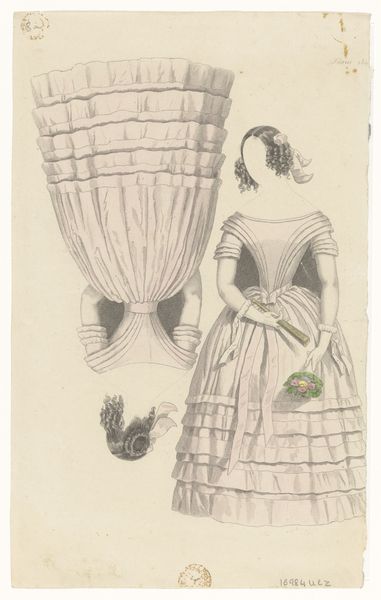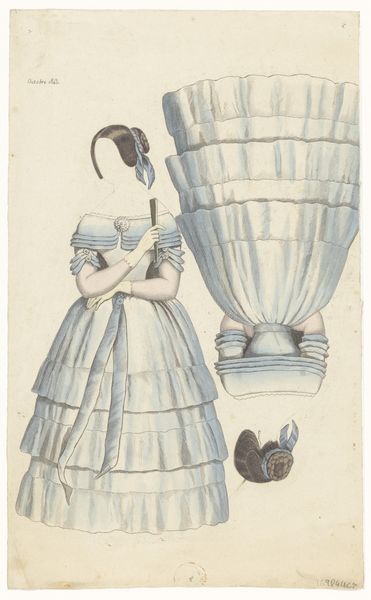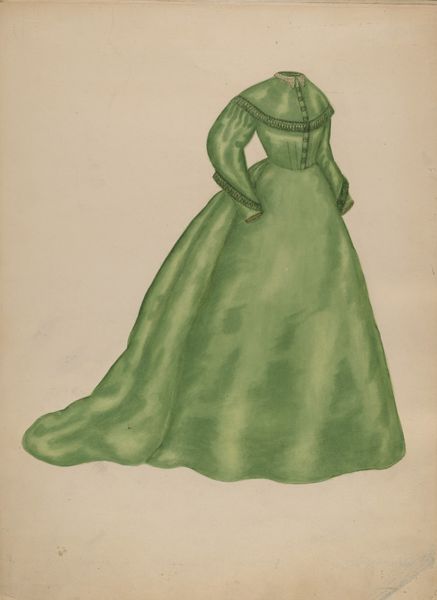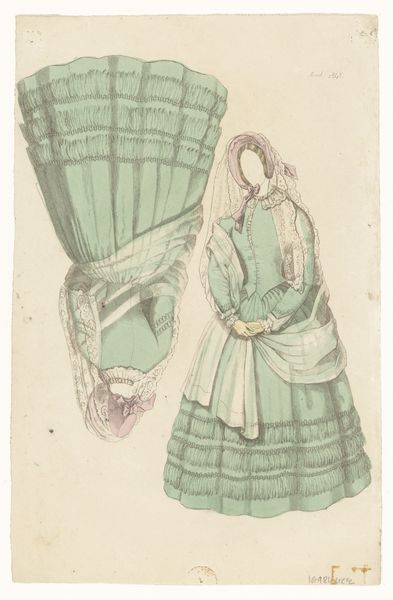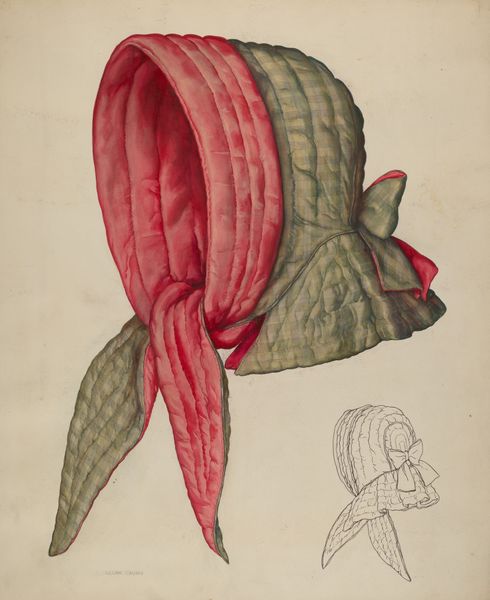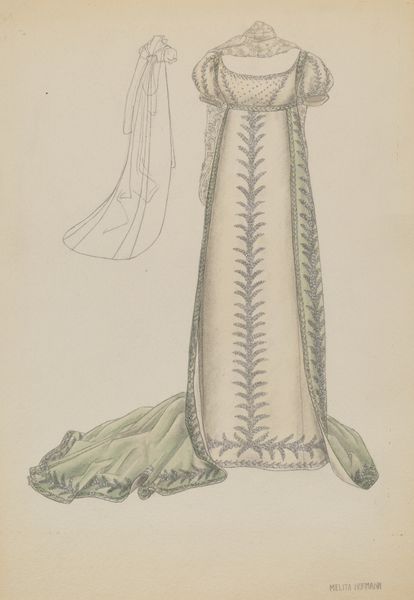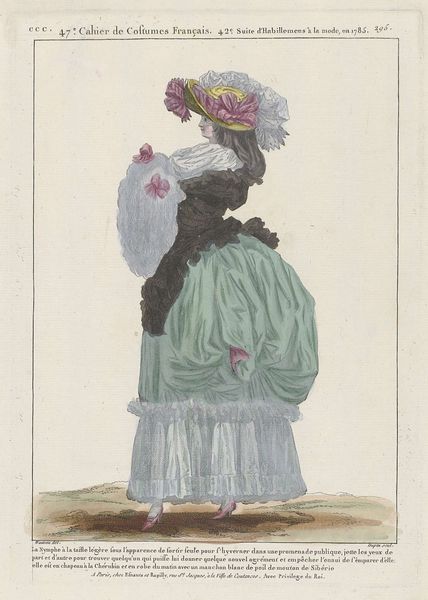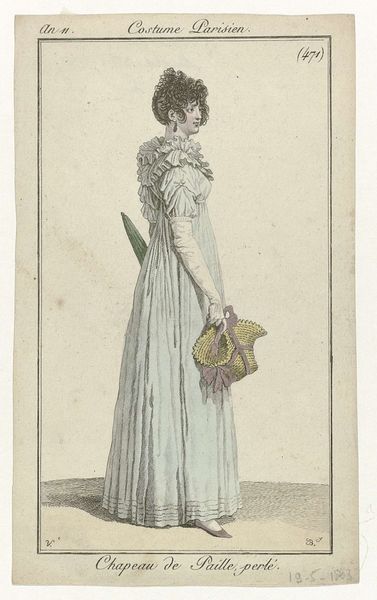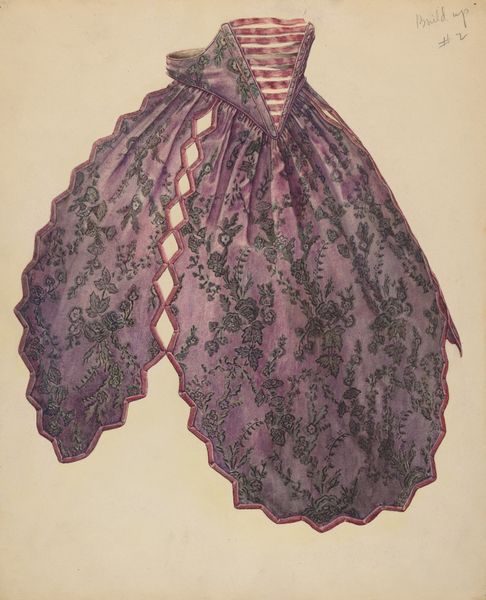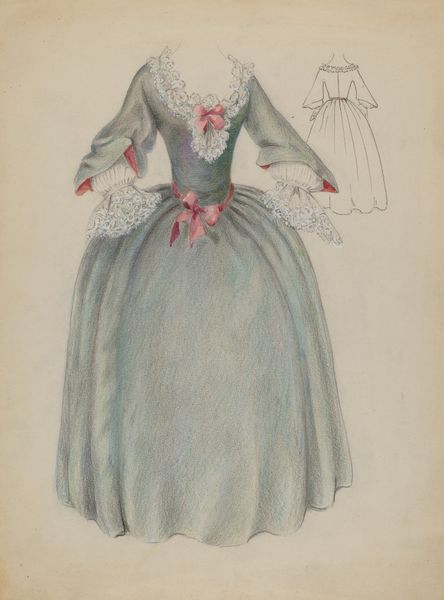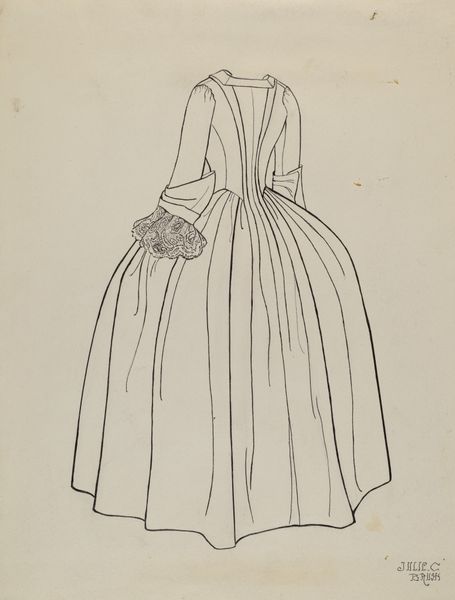
drawing, watercolor
#
portrait
#
drawing
#
figuration
#
watercolor
#
watercolour illustration
Dimensions: height 236 mm, width 160 mm
Copyright: Rijks Museum: Open Domain
Editor: This is "Uitknippop," a watercolour drawing from 1845, by an anonymous artist. It looks like a paper doll illustration of a woman in a green dress and bonnet. It’s just so peculiar. The duplicated image is actually upside down, it has me completely confused. What can you tell me about this piece? Curator: The immediate strangeness you perceive is precisely its charm. In its historical context, fashion plates like this functioned within a specific economy of image production and consumption. The presence of the inverted image serves a very specific function, I wonder what it is? Editor: Well, to me it seems redundant? Or like a printing error. Curator: Or a choice? Fashion plates disseminated ideals, shaping societal expectations around gender and status. By visually representing garments, they allowed consumers – mostly middle to upper class women - to imagine and emulate fashionable trends, fostering aspirations for upward mobility. Where do you imagine this specific example sits in that industry? Editor: I guess the upside-down repeat may allow different kinds of makers to copy or reinterpret the image. Are you suggesting it allows workshops to learn dressmaking skills? Curator: Exactly. The double image would’ve provided the public and specifically workshop owners or dressmakers with very easy-to-use design schemes. Its existence as both art object and potential prototype are therefore heavily intertwined. The history of fashion publications becomes entwined with questions of gender, class and material culture. Editor: I didn't realize these types of images had such cultural weight. Thanks for providing that insight! Curator: My pleasure. Understanding the sociopolitical forces intertwined with art gives us such a valuable, fuller understanding.
Comments
No comments
Be the first to comment and join the conversation on the ultimate creative platform.
